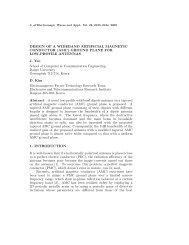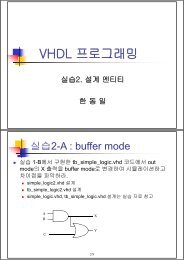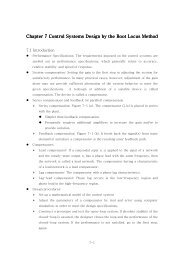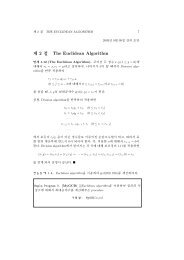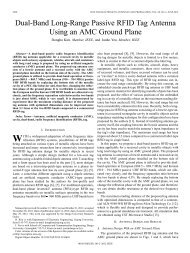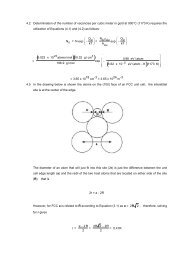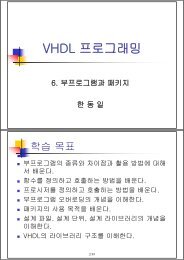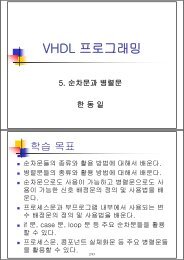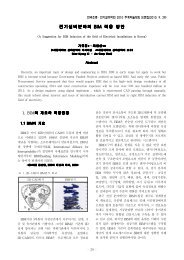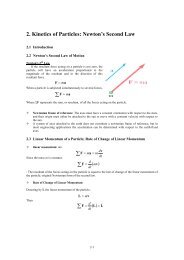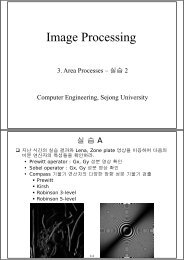Internal generation of waves for extended Boussinesq equations
Internal generation of waves for extended Boussinesq equations
Internal generation of waves for extended Boussinesq equations
Create successful ePaper yourself
Turn your PDF publications into a flip-book with our unique Google optimized e-Paper software.
( )<br />
C. Lee et al.rCoastal Engineering 42 2001 155–162 159<br />
3.2. Uni-directional regular waÕes<br />
Firstly, cnoidal <strong>waves</strong> are generated internally<br />
with the condition <strong>of</strong> Larsen and Dancy Ž 1983 .. The<br />
computational domain consists <strong>of</strong> an inner domain <strong>of</strong><br />
400 m and a sponge layer at the right boundary. The<br />
wave <strong>generation</strong> point is located at the mid-point <strong>of</strong><br />
the inner computational domain. The wave period is<br />
Ts20 s, the wave height is Hs0.5 m, and the<br />
water depth is hs10 m, which gives the wavelength<br />
Ls195 m, the relative water depth khs<br />
0.1p , the wave steepness arhs0.025, and the<br />
Ursell number U Ž . Ž .<br />
r s arh r kh<br />
2 s0.24. Both the<br />
mass transport and energy transport approaches are<br />
used to generate <strong>waves</strong>.<br />
Fig. 1 shows the surface elevations at time between<br />
ts10T and ts11T with an interval <strong>of</strong><br />
Tr10. Good agreement is observed between this<br />
figure and Fig. 2 <strong>of</strong> Larsen and Dancy Ž 1983 .. This<br />
is because, in shallow water with khs0.1p , the<br />
<strong>equations</strong> <strong>of</strong> Nwogu Ž 1993.<br />
are almost the same as<br />
those <strong>of</strong> Peregrine Ž 1967 .. Numerical solutions <strong>of</strong> the<br />
wave amplitude by the mass transport approach are<br />
3% larger than those by the energy transport approach<br />
which matches the ratio <strong>of</strong> CrCe<br />
s1.03 <strong>for</strong><br />
khs0.1p.<br />
In Fig. 1, the incident <strong>waves</strong> generated at the<br />
wave <strong>generation</strong> point propagate both directions<br />
while the <strong>waves</strong> reflected from the left boundary<br />
pass through the wave <strong>generation</strong> point with no<br />
serious numerical distortion. Such good work <strong>for</strong><br />
internally generating <strong>waves</strong> wouldn’t be seen if the<br />
unstaggered grid scheme is used in the <strong>Boussinesq</strong><br />
<strong>equations</strong> <strong>of</strong> Nwogu Ž Wei et al., 1999 .. This is<br />
probably because the unstaggered grid scheme may<br />
result in distortion <strong>of</strong> the solution. Lee and Suh<br />
Ž 1998.<br />
found that the use <strong>of</strong> the unstaggered grid<br />
scheme in the time-dependent mild-slope <strong>equations</strong><br />
<strong>of</strong> Radder and Dingemans Ž 1985.<br />
is all right <strong>for</strong> the<br />
internal wave <strong>generation</strong>. This is probably because<br />
the model <strong>equations</strong> are linear and the distortion <strong>of</strong><br />
the solution is not serious. However, the resolved<br />
wave height was found to fluctuate around the exact<br />
solution due to the use <strong>of</strong> the unstaggered grid<br />
Fig. 1. Surface elevations <strong>of</strong> internally generated cnoidal <strong>waves</strong>; solid linesenergy transport, dashed linesmass transport.



